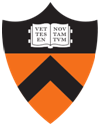by Dennis Crouch

U.S. ex rel Silbersher v. Allergan, Inc., 21-15420, — F.4th — (9th Cir. Aug. 25, 2022) [21-15420]
Zachary Silbersher is a NY Patent Attorney. In 2018, Silbersher filed a qui tam action against Allergan under the False Claims Act (FCA). The allegation was that Allergan fraudulently obtained patents covering Alzheimer’s drug treatments with the result of inflated Medicare drug prices. The district court denied a motion to dismiss but certified the issue for interlocutory appeal. Silbersher v. Allergan Inc., 506 F. Supp. 3d 772, 809 (N.D. Cal. 2020). The Ninth Circuit has now decided the case in Allergan’s favor–holding that the action fails under the FCA’s “public disclosure bar.”
The FCA has been a part of U.S. government since 1863 (the “Lincoln Law”) and is designed as a mechanism for catching (and thus deterring) fraud against the Federal Government. The law incentivizes whistleblowing — non-governmental folks (known as “qui tam relators”) can file the action on behalf of the U.S. government and will then receive a portion of any recovered damages (15-30% depending upon whether the Gov’t steps in to do the litigating).
In its current embodiment, the FCA contains a “public disclosure bar” that prohibits qui tam actions when the allegations are ‘based upon’ information that had already been publicly disclosed. The statute particularly defines public disclosure as being publicly disclosed in at least one of three ways:
(i) in a Federal criminal, civil, or administrative hearing in which the Government or its agent is a party;
(ii) in a congressional, Government Accountability Office, or other Federal report, hearing, audit, or investigation; or
(iii) from the news media,
31 U.S.C. § 3730(e)(4)(A) (2010). Here, the basis of Silbersher claim stem from the prosecution history files of the Allergan patent applications. On appeal, the Federal Circuit concluded that the patent prosecution files stemmed from an administrative hearing and thus qualifies as an “other Federal … hearing.” Part ii above is a bit quirky as written, but the Ninth Circuit concluded that the best interpretation is that four type-ii disclosures are: “report, hearing, audit, or investigation.” Further, those disclosures qualify under ii if they are “congressional, Government Accountability Office, or other Federal.” Id.
An ex parte patent prosecution is clearly “Federal”: the PTO is an agency of the U.S. Department of Commerce. To determine the meaning of “other,” we look to look to dictionaries. . . . “Other” means distinct from that just mentioned, different, or additional. “[O]ther Federal” here clearly means Federal reports, hearings, audits, or investigations not from Congress or the Government Accountability Office, a definition that of course includes ex parte administrative hearings before the PTO. Congress, then, intended for “other” to be a broader category that includes additional, information-obtaining methods distinct from those already mentioned.
U.S. v. Allergan, Inc. The result of this interpretation is that “other Federal” is controlling and the provision could have simply been written as “in a Federal report, hearing, audit, or investigation.” The appellate panel justifies its broad interpretation by the Supreme Court’s 2011 pronouncement that the public disclosure bar has a “generally broad scope.” Schindler Elevator Corp. v. U.S. ex rel. Kirk, 563 U.S. 401 (2011) (interpreting a prior version of the Act).
The result then is that Silbersher’s qui tam case is likely blocked. The law does have a separate provision though would allow the case to move forward if he is an “original source” of the information in his complaint rather than simply finding it within the patent prosecution record. On remand, the district court will need to determine that origin question.
Allergan is looking to win on a ‘technicality,’ but to be clear, the company also argues that it did not make any false claims and so would also ultimately win on the merits.


 by Dennis Crouch
by Dennis Crouch 